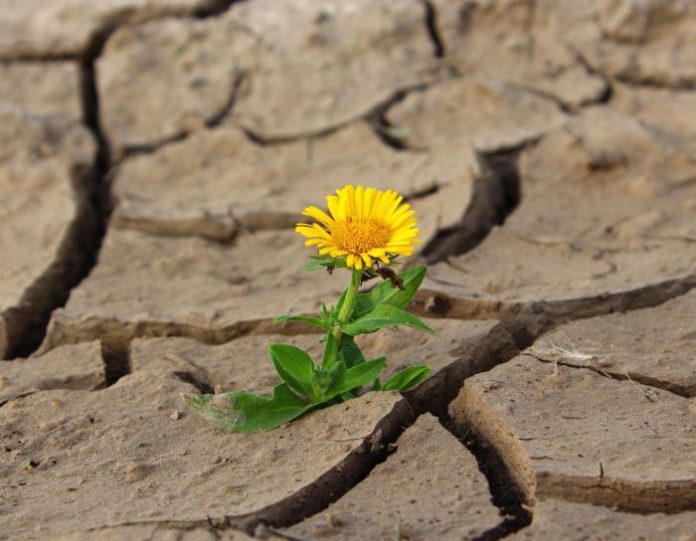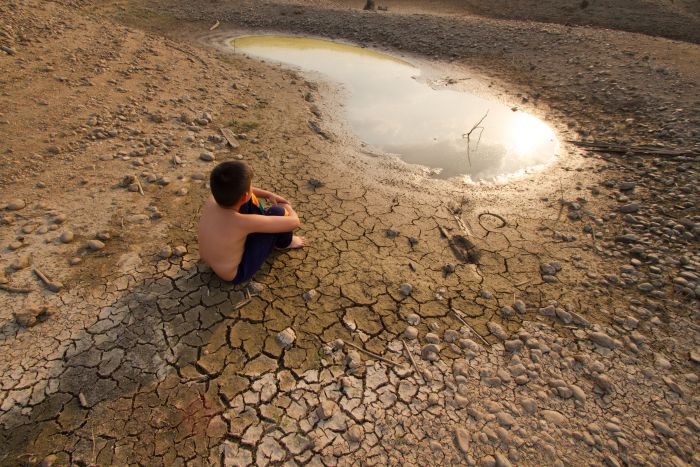
Italy is a country that has made water a sad example of its inability to intelligently manage an asset that is crucial for our very survival and wellbeing.
Despite constant warnings from the scientific world, we have not learnt to respect the natural systems that conserve it, retain it and make it available for human use, helping us to adapt to changes that are now part of our everyday lives. We have traded it, stolen it, polluted it, wasted it, and now we are forced to chase an emergency that is closing in on itself.
Let us try to go through the essential data on water in Italy and the main mistakes in our country, which the WWF defines as real ‘deadly sins’.
Available water. Our country is potentially among the richest in water. On average, precipitation amounts to about 300 billion cubic metres each year, which is among the highest in Europe and the world; the actual availability of water resources is, according to some estimates, 58 billion cubic metres. Of this, almost 3/4 comes from surface sources, rivers and lakes, and 28% from underground resources (shallow aquifers). Unfortunately, this availability is gradually decreasing and there is a general decrease in the annual volume of water flowing into the sea. For example, if we compare the period 2001-2019 with the previous period 1971-2000, there is a 15% reduction in flow for the Tiber and over 11% for the Po.
Priority water. There are absolutely priority uses of water: we must ensure water for drinking, for civil use, for food production, to maintain the ecological functioning of ecosystems. It is therefore crucial, in order to adapt to climate change, to review the distribution of water for the various uses (civil, agricultural, industrial, recreational, etc.) in the face of its reduced availability. We must also avoid certain uses that we cannot afford. One example for all: even today, the development of tourism in the mountains is still largely based on skiing and artificial snow, snow shot from cannons that takes millions of cubic metres of water per year away from other more urgent and crucial uses.
Wasted water. The water resource is wasted in a colander distribution network: for every hundred litres put into the distribution network, as many as 42 are lost and do not reach the taps in homes. Italians also consume, but perhaps it would be better to say ‘waste’, more water than all Europeans: about 120-150 cubic metres on average per family in a year, with an average individual daily consumption of about 220 litres of water.
Water dried up. The watercourses in Italy, the true arteries of a system that collects water and makes it available throughout the territory, have been channelled and cemented, dredged and dammed; the natural flooding areas have been reduced, and the riparian belts made up of woods and wetlands have been destroyed, creating that vital ‘sponge’ that favours water retention and groundwater recharge during floods, progressively releasing it during periods of drought and helping to mitigate the extraordinary effects of climate change. As if this were not enough, we have reclaimed and cleared 66% of wetlands, crucial for the ecosystem services they provide and for mitigating the adverse effects of the climate crisis.

Badly governed water. Unfortunately, the fragmentation of water management among numerous bodies is at the root of the lack of adequate water resource planning. The Water Framework Directive (2000/60/CE) identifies the District Basin Authorities as the bodies that should guarantee a unified vision and guidelines for sustainable water management. For years these bodies have been marginalised and the Regions directly control the management of hydrogeological risk, most of the concessions of use and agricultural policies, without coordinating among themselves and losing an indispensable vision at the river basin level.
Polluted water. The overall availability of water also depends on how it is used and then released into the environment. In some areas of Europe, pollution caused by pesticides and fertilisers used in agriculture alone remains one of the main causes of poor water quality, which then becomes unavailable. Again, the situation in Italy is not the best, as highlighted by Ispra, which found 299 pollutants in the inland waters sampled; pesticides were found in 77.3% of the monitoring sites and 32.2% in the groundwater.
Salt water. The dramatic drought situation has led to a drop in the water level of the Po, Italy’s largest river that supplies water to intensively cultivated territories. The drastic reduction in flow rates, combined with a progressive lowering of the riverbed, is contributing to the rising of the salt wedge (sea water), which has advanced a good 21 km in recent days. The salty waters thus risk compromising the irrigation of crops already stressed by drought.
WHAT TO DO TO FACE THE CRISIS:
Get inspired by what nature has always done: exploit the functioning of ecosystems to retain water, make it available and recharge the groundwater. Today they are called NBS (Nature Based Solution), or solutions inspired by nature.
Renaturalising and restoring the ecological functioning of rivers, increasing the absorption capacity of riparian strips. Regenerate wetlands, true natural water reservoirs, which unlike man-made reservoirs do not interrupt the water cycle by increasing water stress.
Protect: the soil, natural forests and all remaining wetlands that have the crucial task of recharging the water table, combating in every way the sealing and consumption of soil that in Italy is advancing at the rate of 16 hectares per day.
Give centrality back to the Basin Authorities so that there is a single direction that plans water uses according to the real situation of the resource and priorities, with a view to adapting to climate change.
Reviewing water concessions by giving priority to drinking, agricultural and environmental uses, avoiding improper or obsolete uses, such as artificial snow.
Combat waste and incentivise savings by all means. The sooner we go down this road, the less our lives and our economy will suffer.
The priority remains the unpostponable necessity, also recalled in the latest report by the IPCC scientists, to rapidly reduce emissions of climate-altering gases in order to avert the danger of a climate that makes it impossible for Nature as we know it and, in particular, the human species to adapt.



































